Lockheed D-21A Unmanned Scout (USA)
Scout A-12 was created by Lockheed by order of the Central Intelligence Agency. The U-2 aircraft in service did not fully comply with the requirements, which led to the formation of a new technical task, which meant an increase in the basic characteristics. However, from a certain time, the prospects of A-12 have become a topic of controversy. 1 May 1960, the U-2 aircraft belonging to the CIA was shot down over the Soviet Union. This incident led to the emergence of a ban on flights of manned reconnaissance aircraft over the territory of the USSR. However, the intelligence department needed new data about a potential adversary, which should now be collected using new tools.
In October, Lockheed’s Skunk Works company, led by designer Kelly Johnson, proposed a possible solution to an existing problem. On the basis of the existing A-1962 aircraft, it was proposed to develop a carrier of an unmanned reconnaissance vehicle. The task of the carrier was to deliver the drone to the specified area where it was necessary to uncouple. Next, the device, equipped with a ramjet engine, had to independently go to the required area and take photographs.
In the course of preliminary studies and theoretical studies, the optimal appearance of the promising complex was established. It was proposed to build a one-time drone and equip it with a drop container in which there were control systems and photographic equipment. It was assumed that such an architecture would minimize the cost of production and operation of equipment. In particular, certain savings were provided due to the repeated use of complex and expensive navigation equipment.
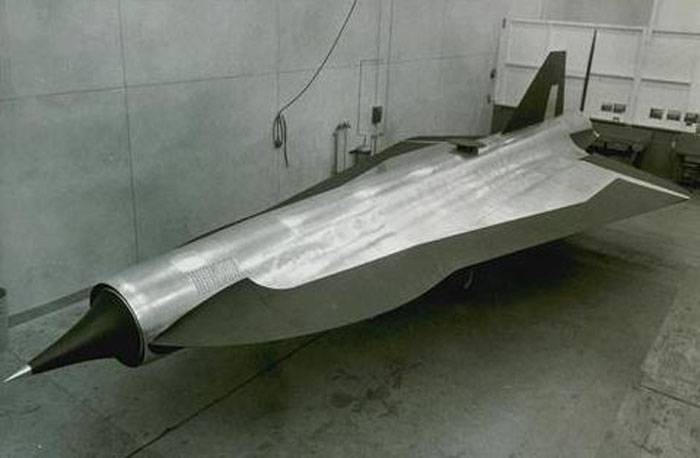
D-21A in the factory. Photo Testpilot.ru
Being a further development of the reconnaissance complex based on the A-12 aircraft, the promising project received the symbol Q-12. That is how the layout was presented, presented at the end of 1962 by the developer to a potential customer represented by the CIA. As far as we know, the leadership of the intelligence organization reacted to the new project without much enthusiasm. In connection with the emergence and spread of anti-aircraft missile systems, the CIA needed high-speed, high-speed reconnaissance agents like the A-12. Drone Q-12, in turn, was of very limited interest.
Despite the lack of an official order and the ambiguous reaction of the Central Intelligence Agency, Skink Work specialists continued to work. During this period, they tested the Q-12 model in a wind tunnel, during which the possibility of obtaining the calculated flight characteristics was fully confirmed. Thanks to this, the work could go on and on, but an official order was required from one department or another.
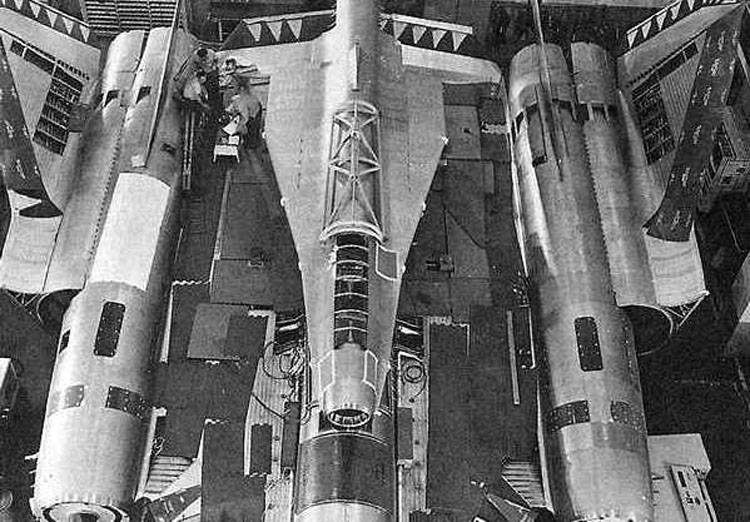
Work in the early stages. You can see the elements of the design of the carrier and the drone. Photo Testpilot.ru
At the turn of 1962 and 1963, Lockheed offered its new development to the air force. This organization became interested in the intelligence complex, which, with appropriate modifications, could become the basis for the strike system. Probably, the interest of the Air Force became an additional incentive for the CIA, as a result of which a tripartite contract appeared to develop a full-fledged project. The document was signed in early spring 1963 of the year.
The project of a prospective unmanned reconnaissance aircraft, used in conjunction with the carrier aircraft, was named D-21. As part of the design work, the Skunk Works department was to develop the project of the drone itself, as well as create a modernized version of the A-12 aircraft, which was to provide the work of the scout. The promising D-21 media is called M-21. Letters for the titles were chosen quite simply. Initially, the concept of a "two-stage" intelligence system was referred to as "Mother and Daughter." Accordingly, the carrier aircraft received the letter "M" from "Mother" - "mother"), and the drone - "D", i.e. "Daughter" ("daughter"). Subsequently, a new version of the project was developed, because of which the name of the base was changed to D-21A.
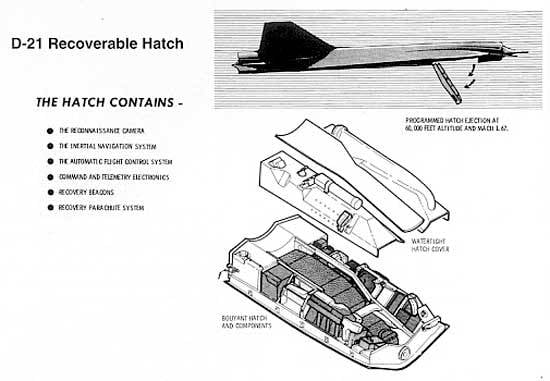
Diagram of the device D-21 with a description of the separating hardware compartment. Figure Testpilot.ru
The reconnaissance vehicle of the new model should have been distinguished by high flight data, which accordingly affected its design. The overwhelming majority of the structural elements were proposed to be made of titanium. Some parts were made of steel alloys and plastics. Studies have shown that only such a design will allow the D-21 to develop the required speed and withstand the resulting thermal loads. As an additional means of reducing the negative impact of heat, it was necessary to use a special ferrite-based lacquer coating, as well as a plating cooling system similar to those used on A-12 and SR-71 aircraft.
D-21 received a cylindrical fuselage, smoothly mated with a delta wing. The front edge of the wing had a rounded nodules, almost reaching the frontal air intake. The front part of the fuselage was made in the form of an air intake with a conical central body. In the tail there was a tapering unit, in which a part of the aggregates of the ramjet engine was placed. Provided tail in the form of a trapezoidal keel. The total length of the vehicle was 13,1 m, the wingspan was 5,8 m. The height was 2,2 m. During the flight on the carrier, the device was supposed to carry discarded head and tail fairings.
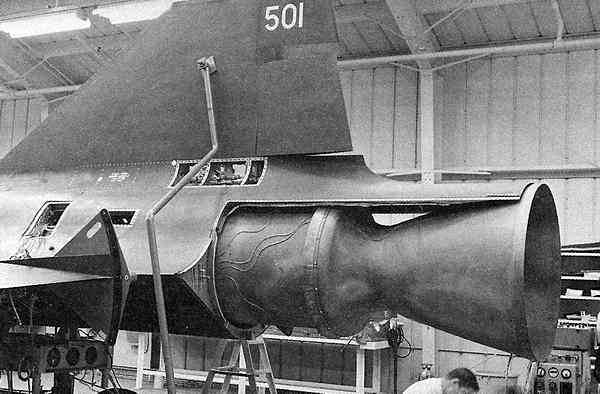
Units ramjet engine. Photo Testpilot.ru
The device was equipped with a triangular wing with developed influxes of ogival shape. The wing was installed with a negative transverse angle V. On the rear edge of the wing were placed moving planes that served as elevators and ailerons. The course was controlled using the steering wheel on the rear edge of the keel.
In the nose of the drone, at a short distance from the air intake, there was a compartment for placing instruments. The control equipment and aerial cameras were proposed to be placed in a common container of length 1,9 m, the lower part of which was an element of the skin of the bottom of the fuselage. Protective housings were also provided on top of the equipment. The instrument compartment was mounted on controlled mounts and could be dropped at a given moment of flight.
The inertial navigation system, the autopilot, the computer of air parameters, and also the means of maintaining the required climatic conditions were placed in the hardware compartment. Provision was made for the installation volume of the existing camera models corresponding to the task. To save on production of quite complex and expensive control devices, as well as to return films with reconnaissance images, the D-21 project proposed to drop the instrument compartment and rescue it with a parachute.
Even in the course of preliminary studies, it was found that a straight-through jet engine Marquardt RJ43-MA-11, previously created for the Boeing CIM-10 Bomarc long-range anti-aircraft missile, should be used as a power plant. After some design changes, such as refining the flame stabilization device, installing a new nozzle and upgrading some other systems, the engine could be used on a reconnaissance vehicle. The main goal of such improvements was to increase the thrust of the duration of work. The upgraded engine, which received the updated designation XRJ43-MA20S-4, could operate without interruption for up to one and a half hours and give thrust 680 kgf.
Most of the free volume of the airframe was given for the placement of fuel tanks. A significant amount of the fuselage stood out under the air intake duct, which provides air to the engine. As a result, not the largest unmanned vehicle was distinguished by a very dense arrangement of internal units. When developing the fuel system, developments in existing projects were taken into account. In particular, to compensate for the heating of the plating, D-21 received heat exchangers through which fuel was to circulate. At the bottom of the apparatus provided valves for connection to the fuel system of the aircraft carrier. The tanks were refilled through one valve, and the second fuel was fed into the plating cooling system.
The Lockheed D-21 reconnaissance drone had a take-off weight of 5 t. The engine used allowed it to reach speeds of up to M = 3,35 and rise to heights of up to 29 km. Flight range was to exceed 1930 km. Taking into account the use of the aircraft carrier, it was possible to significantly increase the radius of the reconnaissance complex.
The prospective unmanned aerial vehicle was to be used with the M-21 carrier aircraft. The carrier was developed on the basis of the existing high-performance supersonic reconnaissance A-12. In fact, M-21 was the original A-12, devoid of reconnaissance equipment and equipped with some other devices. From the compartment located behind the cockpit, it was proposed to remove the cameras, instead of which there should have been an additional cabin with the workplace of the second crew member controlling the operation of the drone. The operator had a set of necessary equipment, and also had a periscope to monitor the device during the flight and launch.
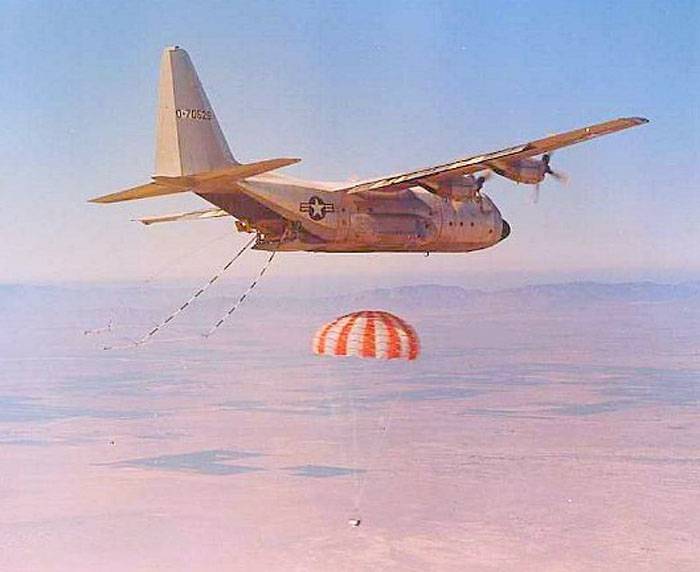
JC-130B Cat's-Whiskers aircraft with equipment for "catching" the hardware container. Photo Wvi.com
On the upper surface of the carrier fuselage, between the keels, it was proposed to mount the pylon with mounts for D-21. On the pylon there were valves for connecting fuel systems, as well as mechanical and pneumatic locks with a pusher, which ensured the reset of the “daughter” at the command of the operator. According to the results of blowing in the wind tunnel, it was recommended to reduce the height of the pylon, because of which the drone had to be between the keels of the carrier. At the same time, between the wing tip of the D-21 and the top of the keel of the M-21, there was only 15 cm left, which could lead to damage to the vehicle. Chief Designer C. Johnson opposed reducing the height of the pylon because of the risks associated with it, but in the final version of the project, this solution was used.
Being a modification of an existing reconnaissance aircraft, the M-21 carrier had similar flight data. Flight speed reached M = 3,35, range - up to 2000 km. That was enough for the full operation of the new intelligence officer.
As planned by the authors of the project, the aircraft carrying a reconnaissance aircraft on the pylon was to be raised into the air from one of the airfields and sent to the place where the drone was dropped. Typing the desired height and speeding up to a speed of the order of M = 3,2, the carrier could reset the D-21. After dumping and withdrawing to a safe distance using a remote control, the scout had to independently carry out the flight according to the program previously loaded into it. After completing reconnaissance and taking photos of the required object, D-21 had to go to a given area and decrease to a height of 18 km. There was a dump of the hardware container, after which the self-destructor, which destroyed the UAV, worked. A container with control systems and photographic films fell down and opened a parachute at an altitude of 4,5 km. Then he should be picked up with the help of aircraft or ships of the naval forces. In particular, equipment was provided for “catching” the container right in the air. For this, a special Lockheed JC-130B Cat's-Whiskers aircraft was built. According to the name of the container capture means, this aircraft was called the "Feline Mustache".
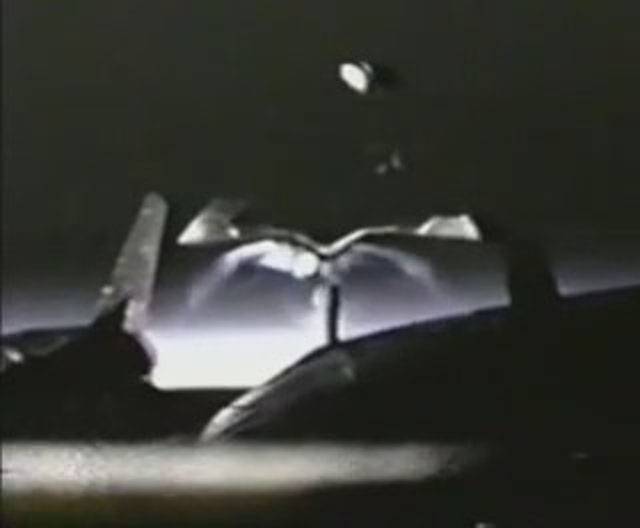
A drone during undocking from the carrier. A shot from the newsreel
Especially for testing in 1963-64, two M-21 aircraft with serial numbers 60-6940 and 60-6941 were built. In addition, Lockheed has assembled seven prototypes of the D-21. All this technique was supposed to be used in trials that started in the spring of 1964 of the year. Pilots Bill Park and Art Peterson, who were to manage the “mothers”, as well as Skunk Works engineers Ray Torik and Kate Besvik, who were responsible for the use of reconnaissance equipment, were involved in the checks. In the future, responsibilities were distributed as follows. B. Park controlled the carrier, and A. Peterson was responsible for piloting the backup aircraft. R. Torik and K. Besvik alternately performed the duties of the operator of the systems on the carrier and the cameraman on the accompanying aircraft.
1 April 1964, one of the M-21 aircraft first flew. The 19 of June of the same year began ground tests of the M-21 and D-21 bundles. The first departure of the carrier with a drone on the pylon took place on December 22, on the same day as the first flight of the reconnaissance aircraft SR-71A, created on the basis of A-12 and intended for the air force. The purpose of the first flight was to verify the interaction of the carrier and its “payload” when flying at different speeds and altitudes. Unmanned vehicle with serial number 501 in this flight is not reset.
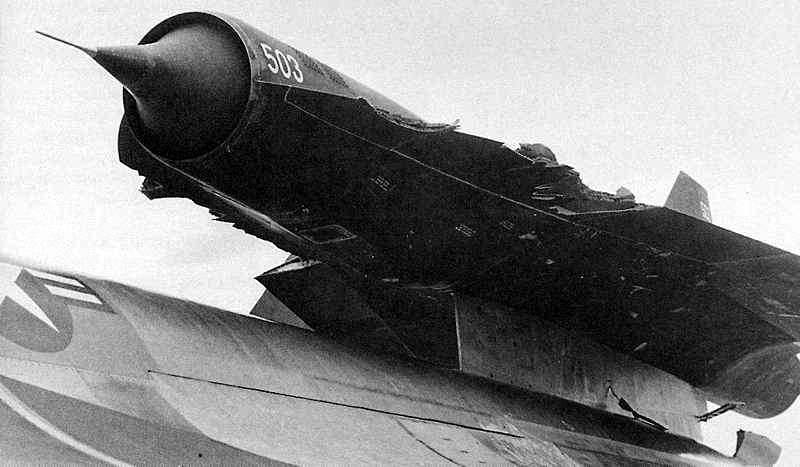
Damage received by the reconnaissance vehicle during one of the flights without resetting. Photo Testpilot.ru
During these tests, the authors of the project faced serious technical and operational problems. The need to correct the identified deficiencies led to a revision of the project schedule. The first D-21 reset, scheduled for March 1965, had to be postponed for almost a year. Because of this, the first independent flight of the new intelligence officer took place only on 5 in March of 66.
On this day, the prototype of the reconnaissance complex, controlled by B. Park and K. Besvik, took off from the Vandenberg airbase (California), picked up the desired height and speed, after which the operator performed a reset unmanned vehicle. During the separation of D-21 No.502 dropped the head and tail fairing, which led to noticeable problems. The head fairing shattered into pieces that hit the wings and damaged them. However, D-21 was able to regularly move away from the carrier and begin an independent flight. According to the memoirs of K. Besvik, it took literally a couple of seconds to separate the apparatus, which, however, seemed several hours. During the joint flight of the "mother" and "daughter" the UAV engine was working, which simplified the exit to the discharge point, but led to the expenditure of a significant part of the fuel stock. On a quarter of the refueling, the experienced D-21 was able to fly only about 100 miles (approximately 280 km). After that, the unit went down, dropped the container with the equipment and self-destructed.

The moment of collision D-21A №504 with the aircraft carrier. Photo Wvi.com
27 April in the tests used the prototype number 506. Taking into account the experience of the previous inspection, it was decided to abandon the drop head fairing. The crew consisting of B. Park and R. Torik successfully completed their task and ensured the flight of an experienced drone. The latter was able to fly about 2070 km. The 16 of June of the same year, the unit №505, launched by B. Park and K. Beswick, having a full refueling, covered the distance 2870 km.
The next test flight was scheduled for July on 30, in which it was planned to use the pre-production sample No. XXUMX. B. Park and R. Torik again raised the complex into the air and headed towards the discharge point, located near Midway Atoll. During the uncoupling an accident occurred. The shock wave, departing from the carrier aircraft, “hit” the drone, as a result of which M-504 lost its keel. At cruising speed, the aircraft had neutral stability, due to which the loss of the tail unit led to a loss of stability and controllability. The plane began to shake, and the resulting overload led to its destruction. The nose of the fuselage broke away from other units and began to fall.
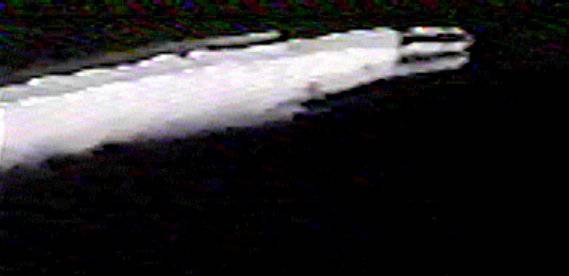
After the collision, the vehicle collapsed. Photo Wvi.com
The crew managed to eject, soon splashed down and was picked up on board one of the ships that were in that area. B. Park got off with minor injuries, and engineer R. Torik damaged a high-altitude suit during the ejection. When falling into the ocean, the suit began to fill with water, which led to the death of a specialist.
The head of the Skunk Works Department, C. Johnson, by his own decision forbade further flights of M-21 carriers with D-21 scouts. Opinion about the risks associated with installing the drone at a minimum distance from the keels, received the most terrible confirmation. Due to the cancellation of further test flights, the D-21 project was under threat of closure.
The only remaining aircraft M-12 №60-6941 due to the termination of the test was sent to the parking lot. No one showed interest in this car, which is why it remained in storage for a long time. She was later transferred to the Seattle Aviation Museum, where it is still located.
The death of a colleague was a serious blow, but Skunk Works experts still found the strength to continue working. Not wanting to risk again, the authors of the D-21 project proposed a new version of the reconnaissance complex, which could dramatically reduce the danger to the wearer and his crew. Now it was proposed to do without a supersonic aircraft M-21. Instead, the reconstructed B-52 bomber was supposed to lift the scout into the air. A new version of the project received the designation D-21B. To the name of the first version, respectively, added the letter "A". The work was continued.
Based on:
http://testpilot.ru/
http://airwar.ru/
http://globalsecurity.org/
http://designation-systems.net/
http://airforceworld.com/
http://wvi.com/
Nikolsky M.V. Black Lightning SR-71. - M .: “Astrel Publishing House”, “AST Publishing House”, 2001. - (Famous aircraft).
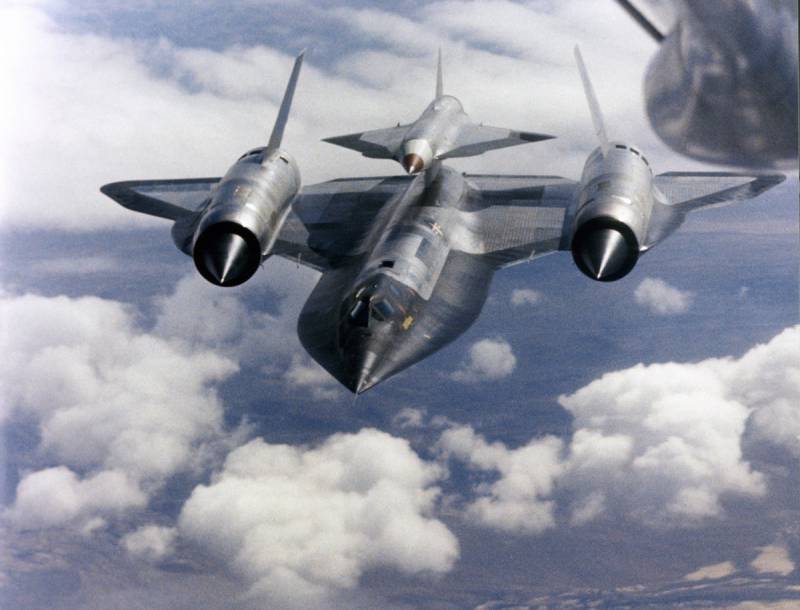
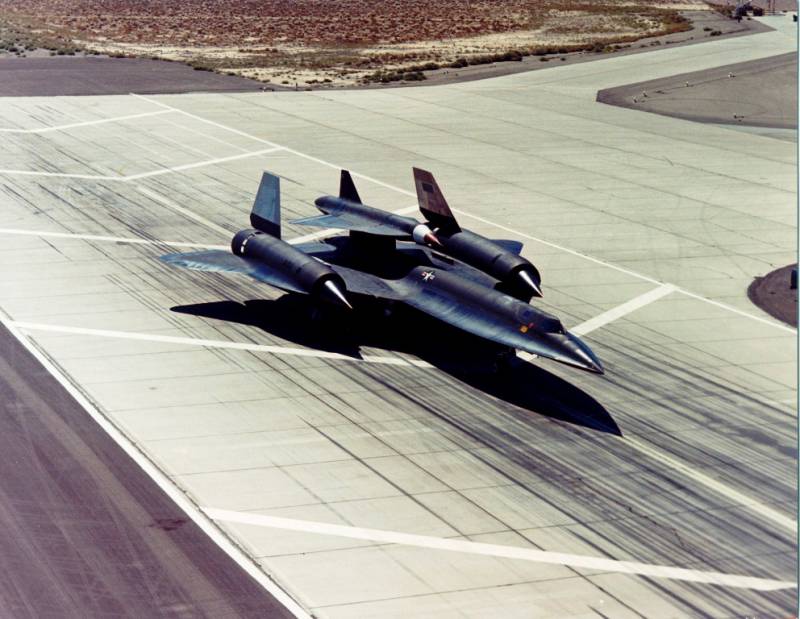
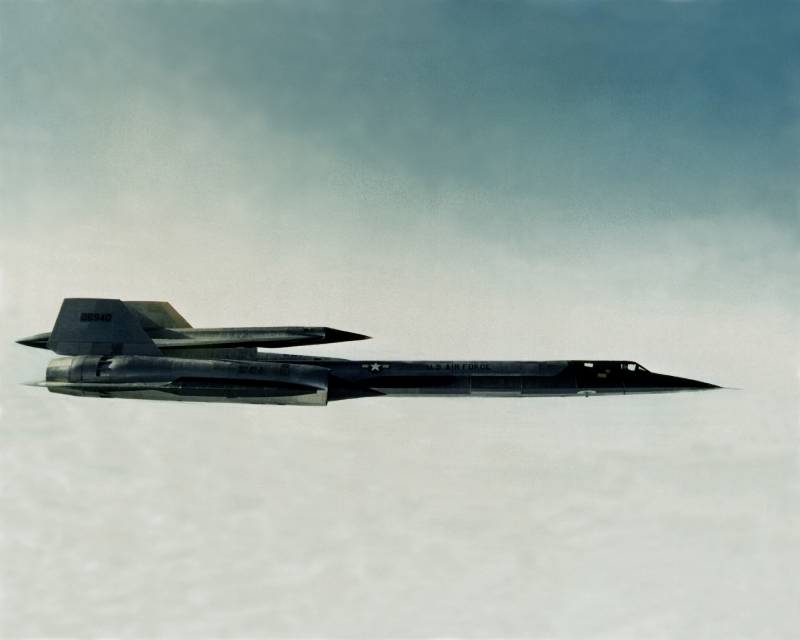
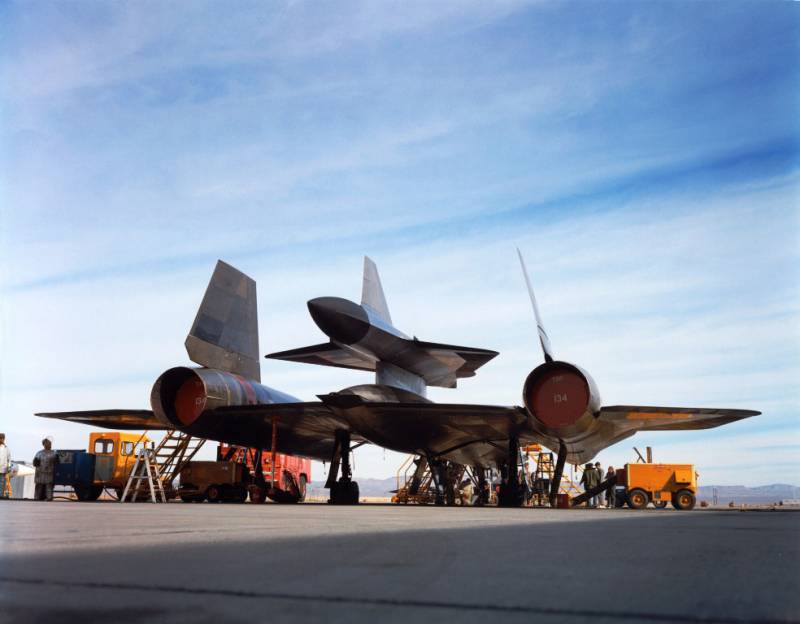
Information